
After finishing the 10 fun filled days of mornings at Natura Horses and afternoons on the beaches with my new friends, I settled down into spending my days in Cercal. Along with my hosts Maike and Kai, there were 3 horses, 1 super sweet dog, a few cats who only came in to eat and 2 volunteers, Suzanna and I.
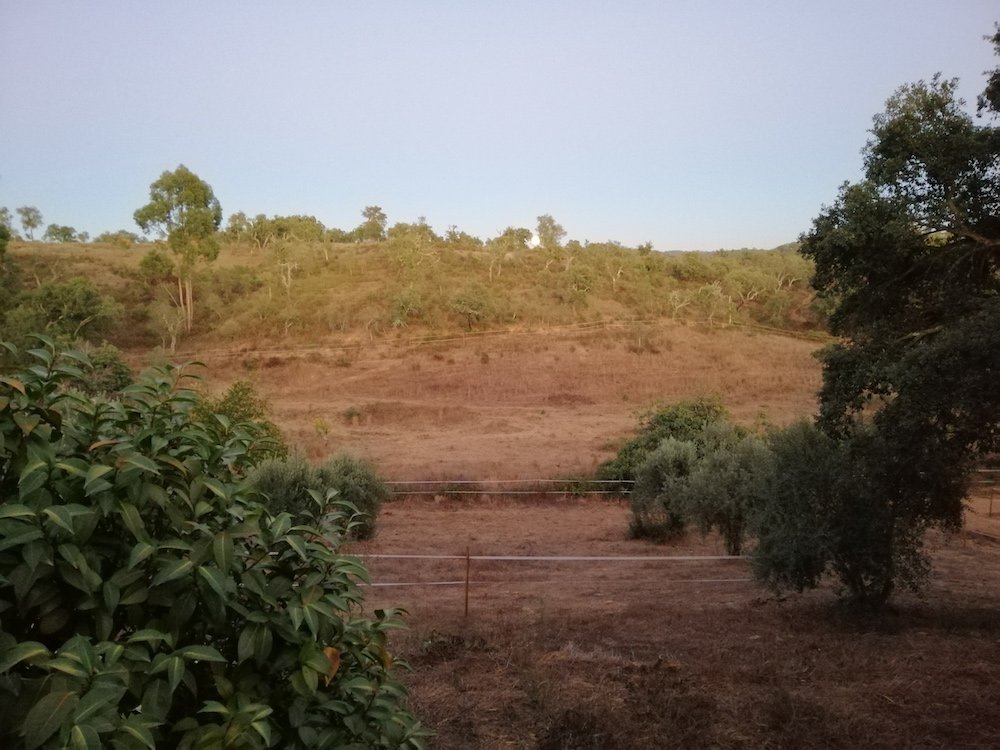
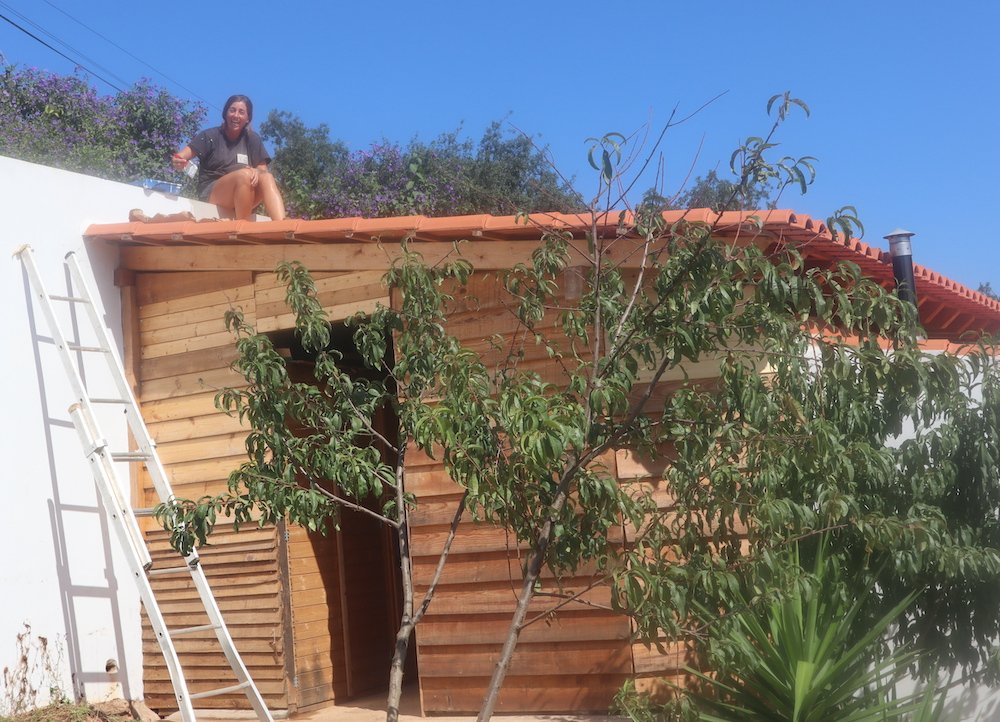
It is very common for expats to buy ruins in Portugal and renovate them. Many use concrete, the contemporary construction material to cover existing stone walls. This is what most modern builders are familiar with. However, Maike and Kai choose to renovate their ruins using the more traditional material of limestone.
With traditional buildings, the structures were made of half-meter thick stone walls (about a yard), and tile shingles over wood rafters. The walls were coated inside and out with limestone, commonly known as whitewash. This natural construction was very stable (hello stone!) and lasting as long at the tiling was maintained to keep water off of the wood and limestone. The wood, I learned recently, was kept insect free by residual the smoke from fire places and chimneys. We can see this older construction over and over in the countryside… the thick stone walls of ruins remain standing, most of the roofs have disintegrated and the walls have lost their limestone coating.

The benefits of these natural materials was really evident in all of the structures here. Whereas concrete absorbs and retains water, causing modern construction to be humid and colder (feeling) inside, limestone breathes… moisture still comes inside, but the walls allow it out again. This continual exchange means that the air inside is not only feels more comfortable temperature wise, it’s also fresher and no mold builds up in the walls (and floats in the air). It wasn’t cold when I was there, which is when the humidity makes the biggest difference, but the freshness of the air was noticeable. Maike and Kai’s construction crew, who agreed to learn how to do these older methods for their renovation, and who completed them all during the covid supply chain restrictions(!), were very impressed with the outcome. They, too, understood firsthand the advantages of their work.
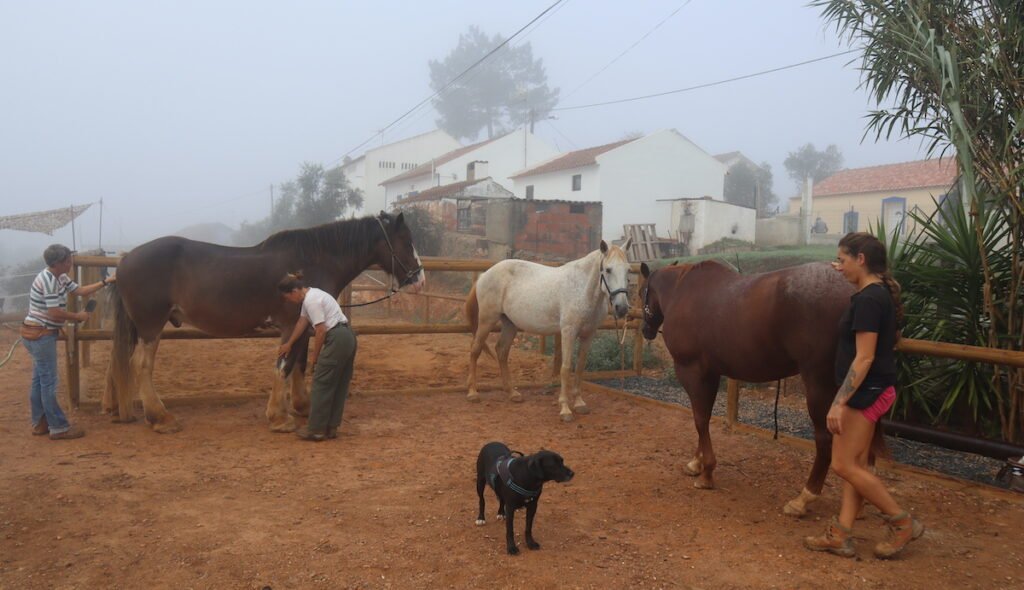
One of the really fun things here, was, as always, the horses. Here we have Big Ben, a Shire Horse, one of only two that Maike knows of in Portugal, and by far the largest horse I’d worked with in Portugal to date. And in contrast, Zeus, a very typical grey Lucitano, a well-loved and oft seen Portuguese breed. And finally, Oregon, a Quarter-horse, a very standard breed in the US and not as common here.
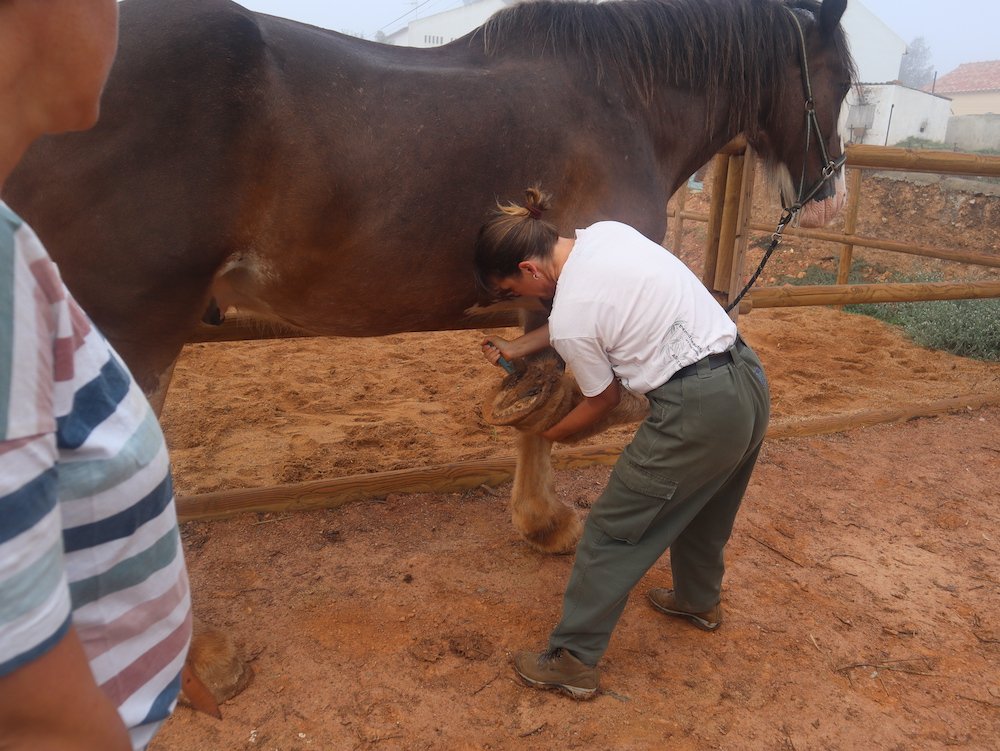
It’s hard to see in these photos how big Ben actually is, but look at the size of his foot in my hand (!!), and where my body is relative to the top of his back (note that I’m almost upright).
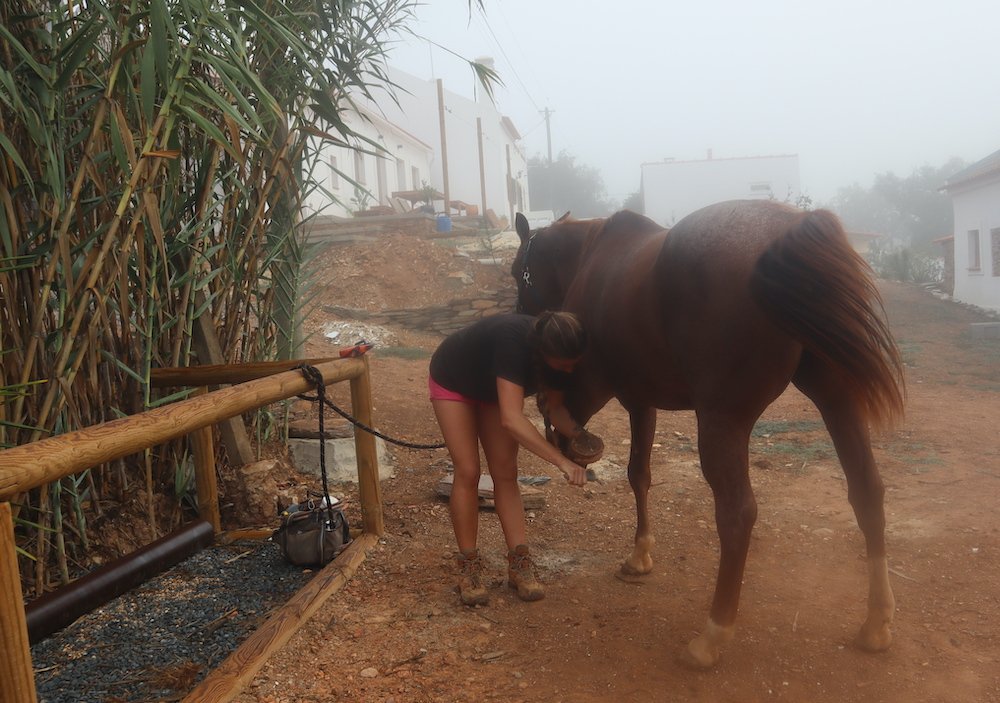
Now look at the size of Oregon’s hoof, which is the size of most horses, and where Suzana’s body is relative to his back (and that she’s bent over at 90 degrees). Now you start to appreciate just how big Ben really is. He’s enormous.
In the background, you can again see the renovated buildings, our apartments more clearly on the left, the office in the center and the main house on the right.

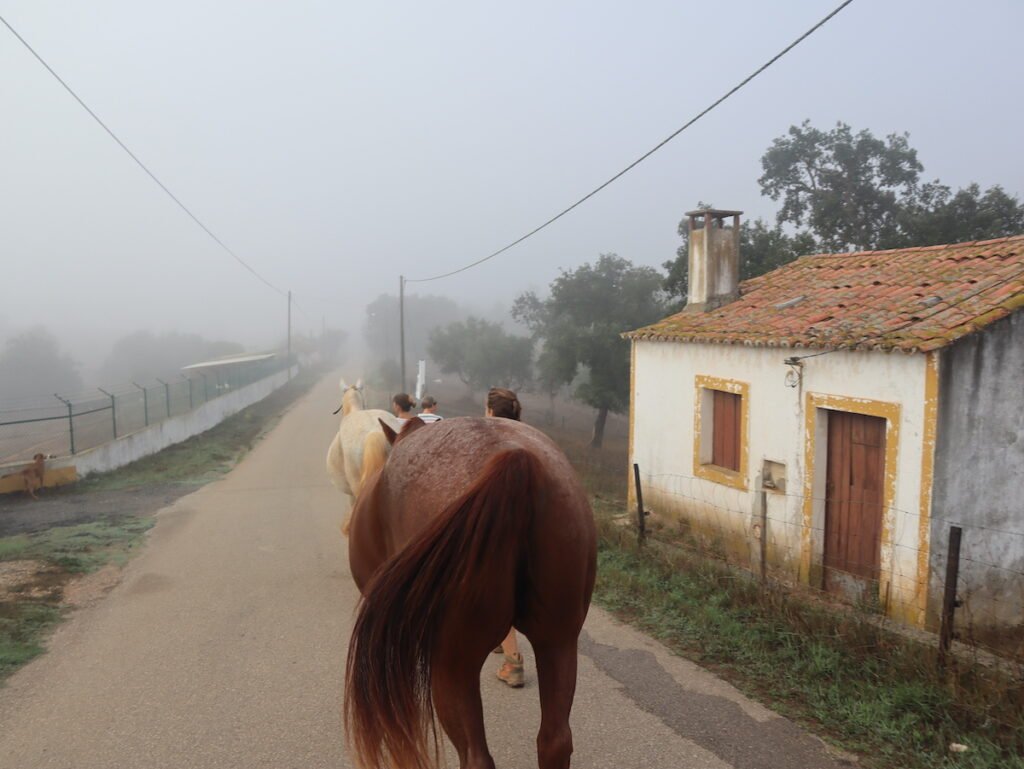
One thing we did almost daily was to take the three horses out for a walk in hand. This is a great way to get horses fit for riding after a break, as they can build the muscle needed for carrying a rider without the stress of the added weight (on joints, ligaments and tendons).
Another thing I did here was pull plants that are poisonous to horses out of the fields.

Zeus, like all of us, liked to keep up appearances… he hennaed his mane and tail regularly by rolling in the red dirt. He’s a natural blond (well, ok, his mane and tail, like most of the rest of him, are naturally white), but who doesn’t like a little variety? Why not be a red head? :)


Late in the afternoon, when it was hottest, the horses came up to sleep under the tarp. We put on their fly masks so that they were a little less harassed by the flies.

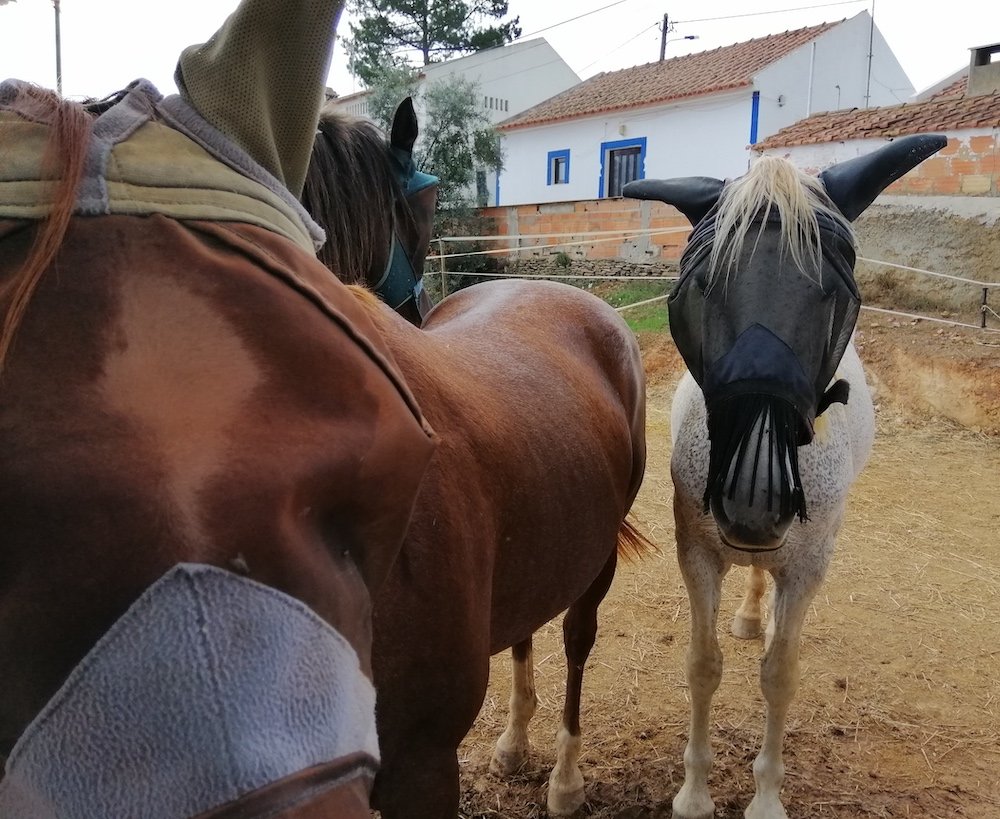
This was a simple and fairly uneventful few weeks. We had fun with the horses, nice meals together, lovely accommodation and enough other stuff to do to keep us all content.
At some point I met their neighbor and good friend in the next valley who also had horses and who wanted some help. Maike proposed that I go over to their place and see if I was interested in helping out there. I walked over one day and had fun meeting Antje’s herd. As you can imagine, that’s where we’re going next.
